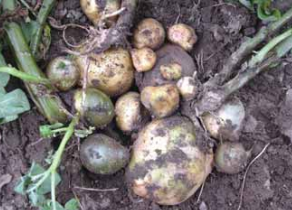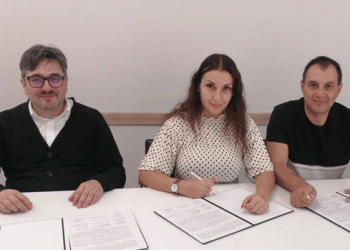Pathogen. Rhizoctonia is a common seed- and soilborne fungus that survives as black resting structures called sclerotia. In the soil, the fungus can also survive as mycelium on organic debris. Planting seed potatoes infested with sclerotia increases the amount of Rhizoctonia inoculum in the soil.
Disease development. Rhizoctonia is more prevalent during cool, wet springs, when plant emergence is slower than the growth of the fungus. Infections start when sclerotia in the soil or on seed tubers germinate, producing mycelium that colonizes plant surfaces.
Symptoms. Rhizoctonia infections that pinch off sprouts before plant emergence cause severe damage. The secondary sprouts that develop from the pinched off sprouts are less vigorous and emerge much later, causing irregular, uneven stands.
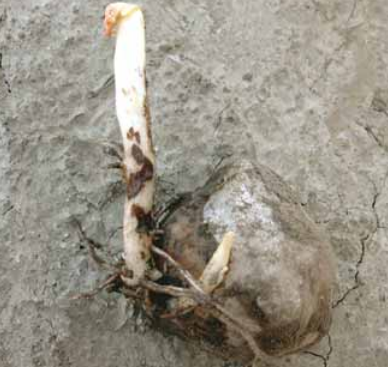
Early infection of stolons often results in pruning before tuber formation or interrupted development of newly formed tubers.
Mid- and late-season infections result in long, deep, sunken cankers on the stems, the formation of aerial tubers and deformed daughter tubers.
Late in the season, the fungus produces a superficial white mycelium on the stems just above the soil line. The fungus forms black sclerotia (“black scurf ”) on daughter tuber surfaces before and after harvest.
Rhizoctonia may also cause skin cracks and russeting.
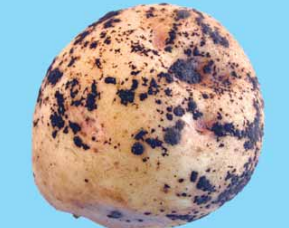
Sclerotia are hard, black structures of irregular
shape and variable sizes tightly attached to the
tuber skin. They are commonly called “the dirt
that won’t wash off.”

Delaying harvest in the fall increases the
amount of sclerotia on the tubers.
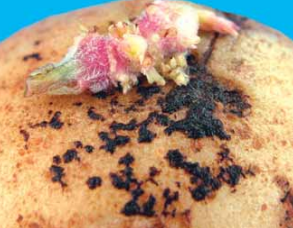
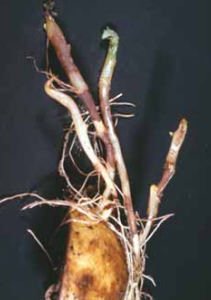
This damage results in poor stands
or weak plants.

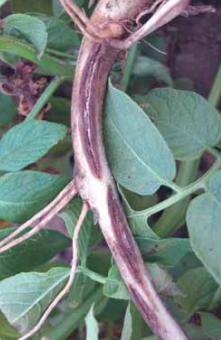
soil line. The mycelium is easily rubbed off. The affected stem area remains green.
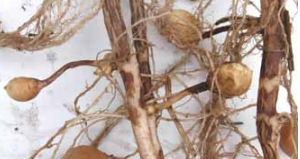
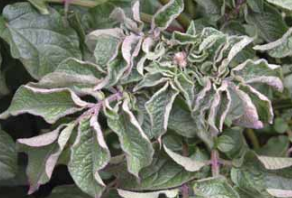
with potato leaf roll.
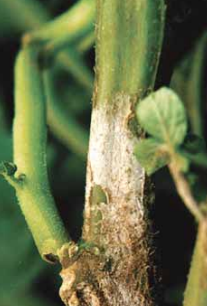
soil line. The mycelium is easily rubbed off. The affected stem area remains green.
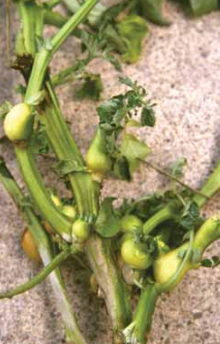
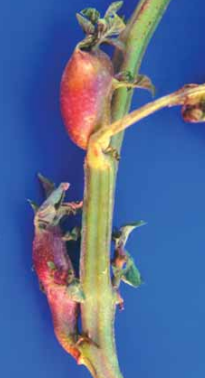
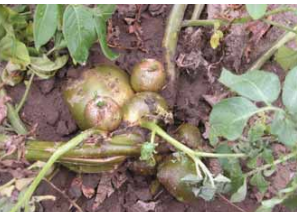
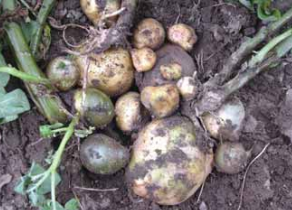
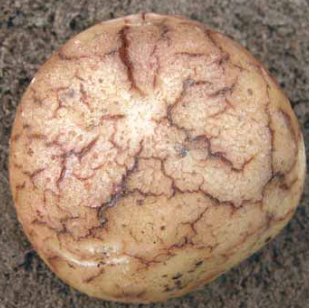
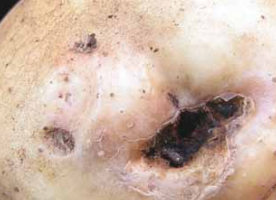
at the stem end. The dark brown fungal
threads can be seen on the tuber surface.

